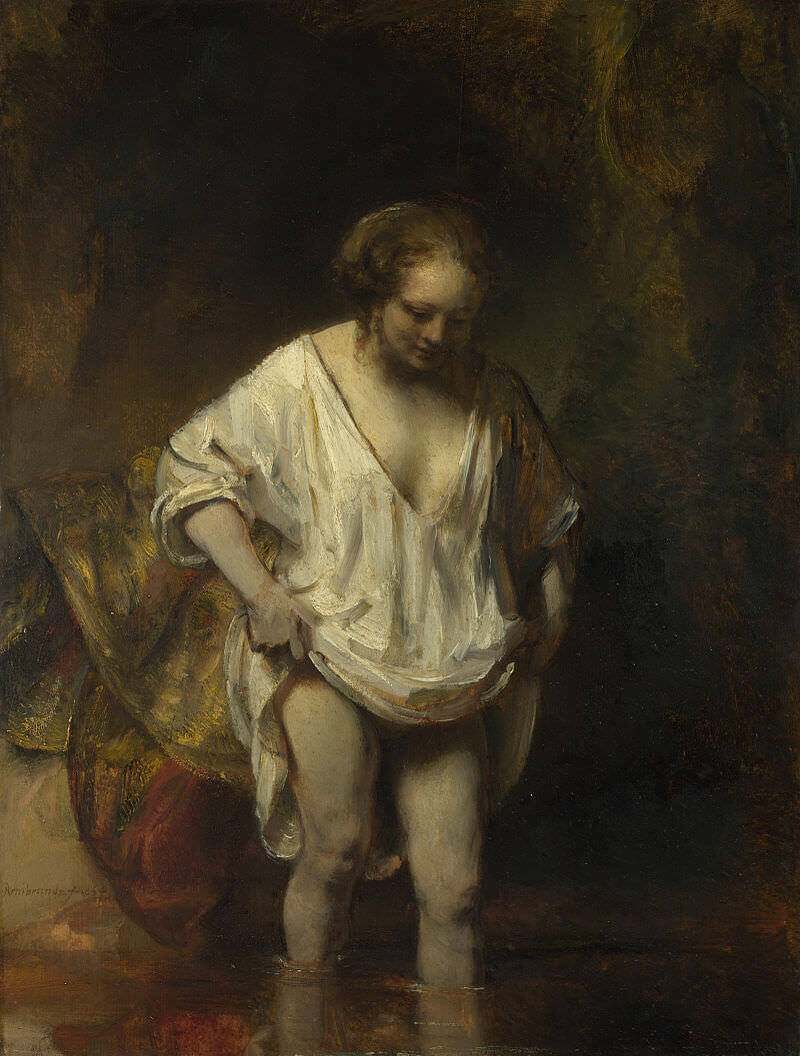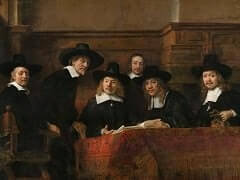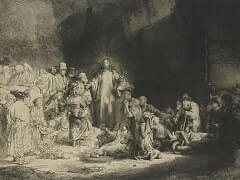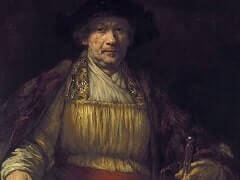A Woman Bathing in a Stream by Rembrandt

After the death of his wife Saskia in 1642, Rembrandt employed nannies to look after his son Titus; one of them was Hendrickje Stoffels. The painter made her his mistress, notwithstanding the slander amongst his circle. The portraits of Hendrickje differ from those of Saskia in their humanity which is contrasted to the ideal, romantic and bourgeois beauty of the latter. With Hendrickje we reach into Rembrandt's intimacy. Had the artist given way this far to follow the taste of his patrons or was his vision transformed by age? Both hypotheses are plausible, perhaps they even complement each other. His plastic values constantly evolved. Hendrickje is depicted in a monumental style which turns the drapery of the background into a multicolored architecture. The large and firmly applied brush-strokes confer plastic power to the modeling of the body. The way in which Hendrickje steps into the water shows a warm and blossoming woman: Rembrandt thus creates the northern version of the 'woman bathing'.




















